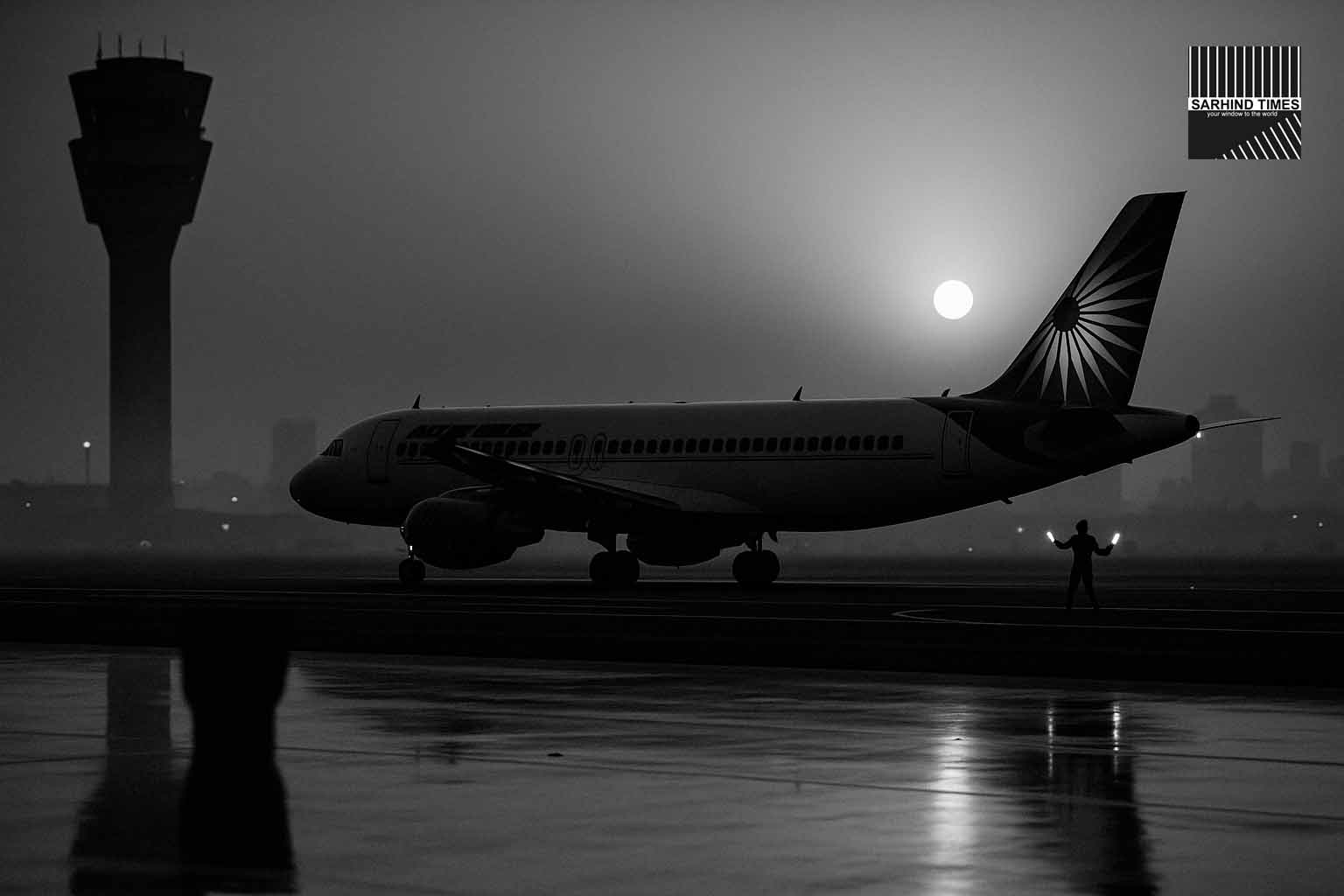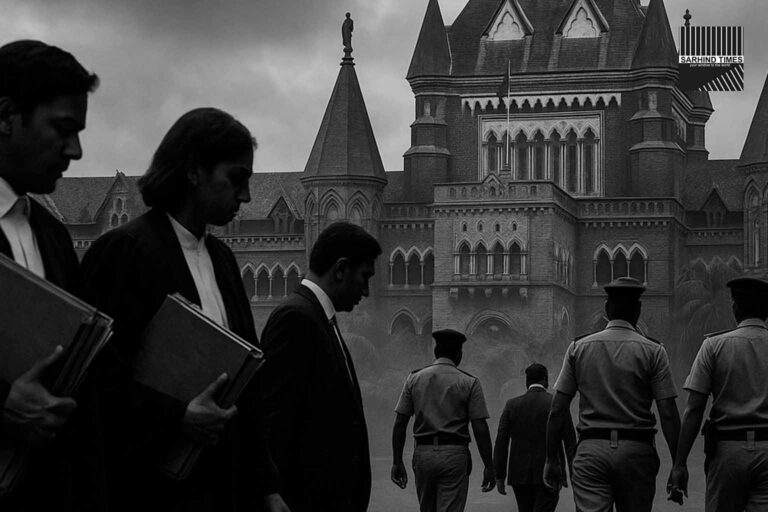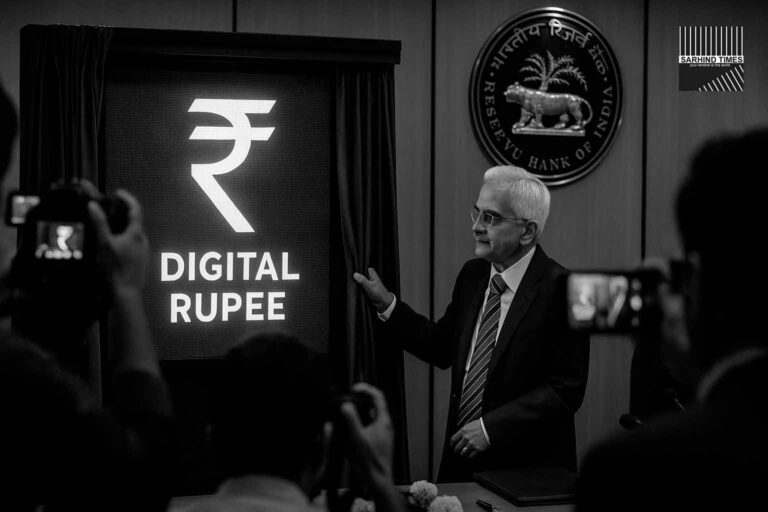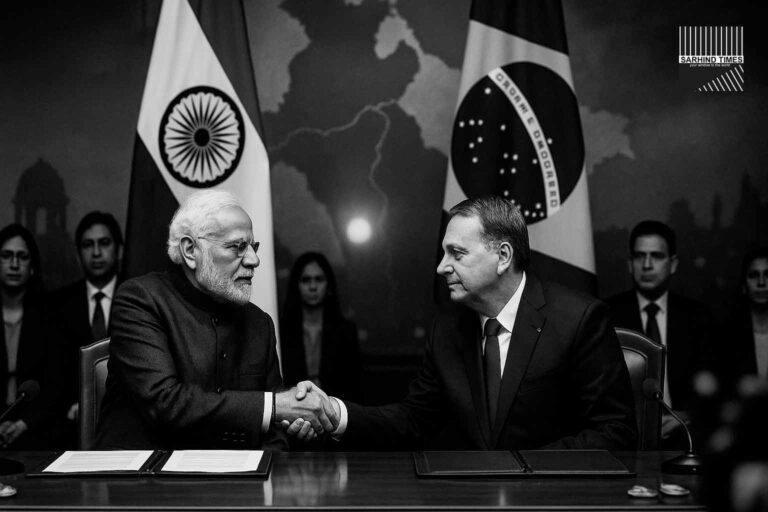By SarhindTimes Aviation & Business Desk | Gurugram / New Delhi | Tuesday, October 21, 2025
Marking a new phase in its post-Tata transformation, Air India has announced an expansion of 174 additional weekly flights across domestic and short-haul international routes under its Winter 2025–26 schedule, beginning October 26.
The move, orchestrated from the airline’s Gurugram global headquarters, signals confidence in India’s air-travel rebound and aligns with the carrier’s ongoing five-year modernization plan.
Officials say the fresh schedule is the largest route augmentation since the merger of Air India with AirAsia India under the “Vihaan.AI” turnaround blueprint.
Strategic Expansion
According to internal scheduling data reviewed by Sarhind Times, the 174 new services include:
- 112 domestic flights connecting metro-tier II city pairs such as Delhi–Surat, Bengaluru–Jammu, and Hyderabad–Varanasi.
- 62 international rotations to destinations in Southeast Asia, the Gulf, and neighboring SAARC nations, notably Dubai, Muscat, Colombo, and Bangkok.
The added frequencies represent a 12 percent increase in total weekly departures and will be primarily operated using the airline’s narrow-body Airbus A320neo and A321 fleet—ideal for high-density, short-sector operations.
Air India MD & CEO Campbell Wilson stated in a release:
“These flights strengthen our domestic grid, optimize aircraft utilization, and extend Air India’s international footprint in markets showing sustained demand. Our transformation journey continues to gather momentum.”
The Gurugram Hub: Brain of the New Air India
From its gleaming glass tower in Gurugram’s Cyber City, Air India’s Network Planning and Operations Control Centre coordinates flights across continents.
Digital dashboards track aircraft in real time, while AI-driven analytics balance crew duty times, maintenance schedules, and slot availability.
The airline’s move from Mumbai to Gurugram in 2024 symbolized more than geography—it was a shift from legacy culture to data-centric governance.
Executives say the proximity to Delhi’s Indira Gandhi International Airport and Tata Group’s other aviation ventures (Vistara, AirAsia India, Air India Express) allows faster collaboration and decision-making.
Domestic Growth Story
Air India aims to consolidate its position on routes dominated by low-cost carriers.
Key domestic augmentations include:
| Sector | Frequency Added | Weekly Total | Aircraft |
| Delhi–Hyderabad | +7 | 35 | A320 neo |
| Mumbai–Bengaluru | +10 | 49 | A321 |
| Kolkata–Guwahati | +5 | 21 | A320 |
| Chennai–Ahmedabad | +4 | 14 | A320 |
| Delhi–Srinagar | +3 | 17 | A320 |
The increased connectivity will ease pressure on high-traffic sectors during the festive and business-travel peaks of October–March.
Industry observers note that this strategy—defending domestic turf while rebuilding global credibility—mirrors Tata Group’s long-term aviation calculus.
International Focus: Neighbors First
While wide-body expansion remains limited until new aircraft deliveries arrive in 2026, Air India is maximizing available capacity by upping short-haul rotations.
New or enhanced services include:
- Delhi–Dubai (2 extra dailies)
- Mumbai–Doha (daily)
- Chennai–Colombo (4 per week)
- Kochi–Bahrain (3 per week)
- Delhi–Bangkok (3 per week, daylight timings)
Aviation analyst Mark D’Souza notes:
“Short-haul gains serve a dual purpose: they tap diaspora demand and keep aircraft flying profitably while the long-haul fleet undergoes retrofits.”
Fleet and Infrastructure Modernization
Air India’s parent Tata Sons is mid-way through a record order of 470 aircraft from Airbus and Boeing—comprising A320/321neos, A350-900/1000s, B737 MAXs, and B787 Dreamliners.
The first A350s have already joined the fleet, equipped with new-generation cabins designed by JPA Design and Collins Aerospace.
Under Project Abhinandan, the carrier is refurbishing legacy wide-bodies with lie-flat seats, upgraded galleys, and touch-screen IFE systems.
Simultaneously, the Gurugram base hosts training simulators for 1,500 pilots and 4,000 cabin-crew members.
COO Klaus Goersch emphasized safety and punctuality:
“Operational reliability is the heartbeat of transformation. More flights mean nothing if on-time performance lags. We’re investing heavily in predictive maintenance and crew analytics.”
Economic Context: A Skyward Recovery
India’s aviation sector has rebounded strongly from the pandemic slump.
Passenger traffic reached 154 million domestic flyers in FY 2024-25—up 18 percent year-on-year—and is projected to cross 170 million this fiscal.
The civil-aviation ministry credits Tier-II city demand, cheaper fuel imports, and airport privatization for the resurgence.
Air India’s aggressive scheduling taps into this surge while competing with Indigo’s 60 percent market share.
However, analysts warn that maintaining service quality at scale will be the next test.
Employment and Training Boost
The new schedule adds nearly 1,000 operational jobs, including pilots, ground engineers, dispatchers, and flight attendants.
Air India has re-opened recruitment pipelines through the Aviation Academy in Gurugram, offering 12-month training modules.
Women now account for 43 percent of new cabin-crew intakes—one of the highest in Asia.
The HR head, Sandeep Verma, remarked:
“Aviation careers are regaining glamour, but we’re emphasizing discipline and customer empathy over image.”
Passenger Experience: A Brand Reborn
Brand consultants say the visible transformation is not only in aircraft paint but in attitude.
Air India’s red-and-gold livery—now stylized with the ‘Window of Possibilities’ logo—has begun to symbolize professionalism and pride rather than nostalgia.
From AI-powered chatbots handling rebooking to digital meal pre-orders, the airline is quietly rewriting its passenger playbook.
Loyalty programme Flying Returns 2.0 now integrates with Vistara and Air India Express miles, reflecting Tata Group’s push toward a unified customer ecosystem.
Business traveller Ritu Chopra, who flies weekly between Delhi and Pune, says:
“The difference is visible—clean cabins, polite crew, faster check-in. It finally feels world-class again.”
Operational Synergy with Air India Express
To optimise fleet use, Air India has established a Joint Operations Centre (JOC) with its low-cost subsidiary Air India Express.
This ensures smoother aircraft rotation, unified maintenance, and coordinated slot bidding.
The winter schedule strategically alternates Express and mainline aircraft on overlapping routes like Delhi–Kochi and Mumbai–Sharjah to balance yields.
Challenges Ahead
While the expansion is ambitious, hurdles remain:
- Airport Slot Saturation — Major hubs like Delhi and Mumbai face congestion; even small delays ripple network-wide.
- Maintenance Capacity — MRO facilities must match the growing fleet size.
- Fuel Volatility — ATF prices remain sensitive to global crude swings.
- Competition — Indigo, Akasa, and foreign carriers vie for the same middle-class passenger.
Yet insiders insist that discipline and digitalisation can offset these pressures.
Environmental and ESG Initiatives
Sustainability features prominently in Air India’s roadmap:
- 10 percent sustainable-aviation-fuel (SAF) blending target by 2027.
- Paperless flight decks using iPad-based electronic flight bags.
- Carbon-offset options integrated into ticket purchase pages.
In coordination with the Tata Energy and Renewables division, trials are under way to power ground vehicles at Delhi and Bengaluru airports through solar microgrids.
The Broader Picture: India as Aviation Hub
Civil-Aviation Minister Jyotiraditya Scindia hailed Air India’s expansion as part of India’s emergence as a global aviation node.
“By 2030, India will handle over one billion passenger movements annually. Flag-carriers must lead this transformation through reliability and sustainability.”
Gurugram’s cluster of airline headquarters—Indigo, Vistara, Air India—now forms what experts dub “India’s Aviation Corridor.”
Passengers React
Morning flyers at Delhi’s Terminal 3 shared optimism mixed with nostalgia.
Retired Air India mechanic Ravindra Pathak, who worked through the 1980s, said:
“We kept the dream alive when times were hard. It’s heart-warming to see the Maharaja back in the sky with pride.”
Social-media timelines lit up with photos of freshly painted aircraft bearing new livery tags: ‘A Tata Group Airline’.
Conclusion: From Survival to Sovereignty in the Skies
Air India’s winter expansion is more than a scheduling update—it’s a statement of resurgence.
From the ashes of debt and dysfunction rises a carrier rediscovering its identity.
With a firm base in Gurugram’s tech-driven ecosystem, a rejuvenated fleet, and renewed customer trust, Air India’s flight path embodies India’s own narrative: ambition anchored in modernization.
As CEO Campbell Wilson remarked last month:
“We’re not just adding flights; we’re adding credibility.”
If execution matches ambition, Samvat 2082 may not only shine in markets but also in the skies.
#AirIndia #Aviation #TataGroup #Gurugram #Flights #TravelNews #IndiaAviation #VihaanAI #AirlineReform #WinterSchedule























+ There are no comments
Add yours